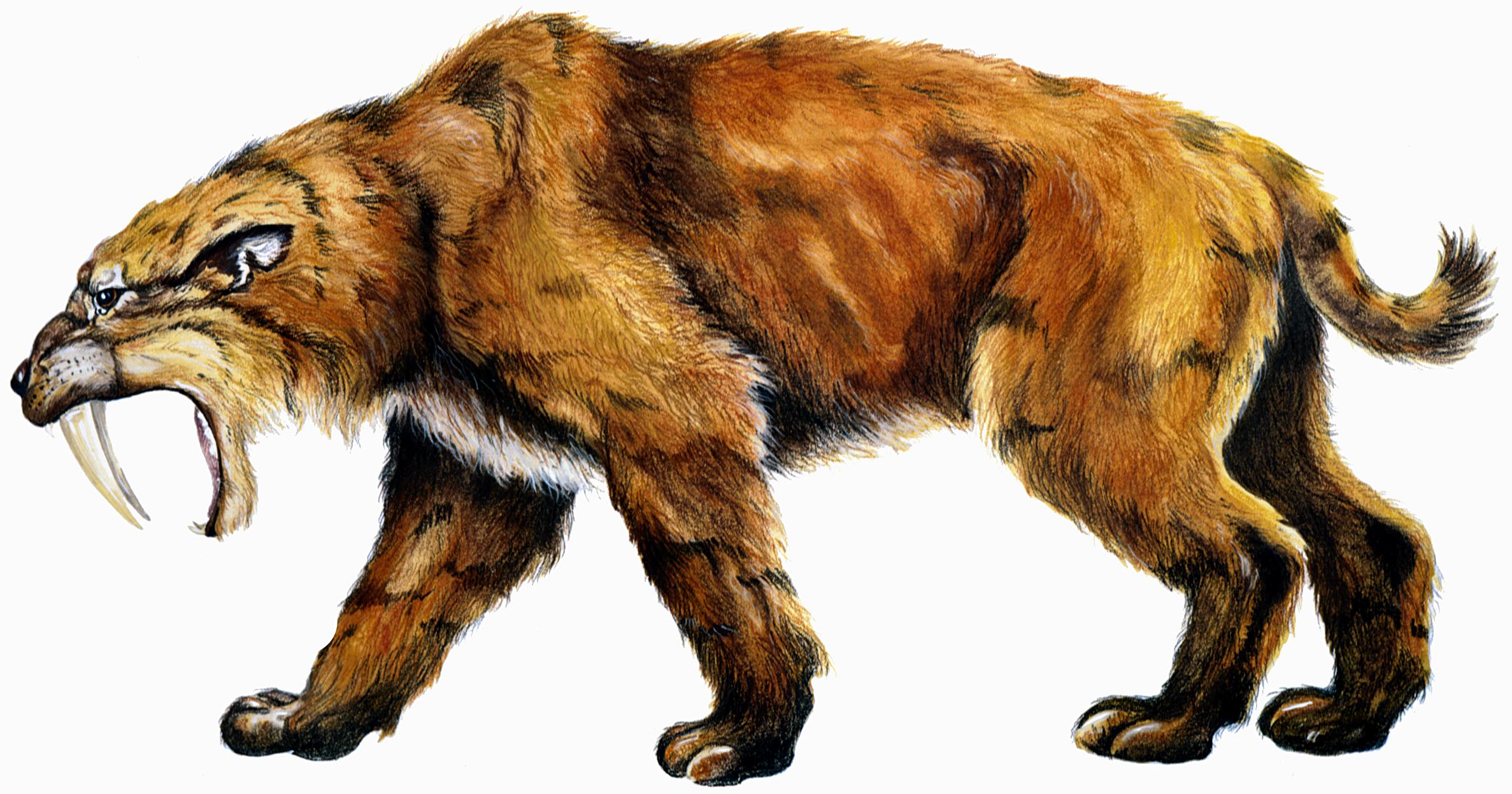
Saber-toothed cat (Smilodon fatalis). Image was generously provided by the Indiana State Museum.
Saber-toothed cats, with their long, daggerlike canines protruding from the sides of their mouths, are one of the most iconic "Ice Age" mammals in North America. Many people think of the "saber-toothed tiger," but many species of saber-toothed cats have lived during the past 40 million years. Indeed, the modern world is unusual in not having a saber-tooth among its large cats, because in the past they were normal members of mammal communities. The most recent group of saber-tooths are the machairodonts, and it is these that have been found as fossils in eastern North America. Only the true Saber-tooth, Smilodon fatalis, has been found so far in Indiana, but its relative the Scimitar cat, Homotherium serum, has been found in northeastern Arkansas and central Tennessee, little more than 100 miles from Indiana's borders, and probably lived here as well.
Large carnivores like the Saber-tooth are normally rare as fossils because, as top members of their communities, they are less numerous than small herbivores and therefore less likely to be preserved in the paleontological record. Nevertheless, the true Saber-tooth, Smilodon fatalis, is one of the best known Pleistocene mammals because of the thousands of skeletons preserved in the Rancho La Brea Tar Pits of California. Smilodon was a large animal that weighed 160 to 280 kg (350-620 lbs), larger than lions and about the size of Siberian tigers. Smilodon was different from living large cats, with proportionally longer front legs and a much more muscular build. Its upper canine teeth are long, flat and daggerlike. Living felids use their canines not only to kill prey, but also as guides to bring the teeth together without breaking as the animals close their mouths. Smilodon's canines did not act as guides: they have no lower canines so their bladelike upper canines protrude completely past the lower jaw. Large, slow-moving animals were probably the main prey of Saber-tooths, who killed by puncturing vital areas of the neck and belly with the canines.
Classification
- Phylum: Chordata
- Class: Mammalia
- Order: Carnivora
- Family: Felidae
- Subfamily: Machairodontinae
Smilodon fatalis was widespread, having been found coast to coast in North America, as far north as Idaho and Nebraska and southward into South America. It is best known from California and Florida. The geologically oldest record of Smilodon is about 500,000 years old and the youngest is only 9,400 years old, an animal found during the construction of a bank in Nashville, Tennessee.
In Indiana, Smilodon has been found at the Harrodsburg Crevice site in Monroe County, just south of Bloomington, in sediments filling a sinkhole. Dire wolves, extinct peccaries, and assorted other mammals were found at the same site. The age of the Harrodsburg Crevice fauna is somewhat uncertain because it appears to be older than can be dated with radiocarbon, but the animals there most likely lived during the last interglacial period about 140,000 years ago.
The Dire wolf is well known in Indiana: the first fossil remains were recovered in 1854 from the Ohio River terraces near Evansville by Francis Lincke. The species was later described by Joseph Leidy of the Philadelphia Academy of Sciences based on Lincke's Indiana fossils. At least three sites in Indiana have produced specimens of Canis dirus--the Evansville site and ones in Monroe and Crawford Counties - and it is known from all the surrounding states except Michigan.
P. David Polly
Department of Geological Sciences
Indiana University
1001 E. 10th Street
Bloomington, Indiana 47405 USA
pdpolly@indiana.edu


